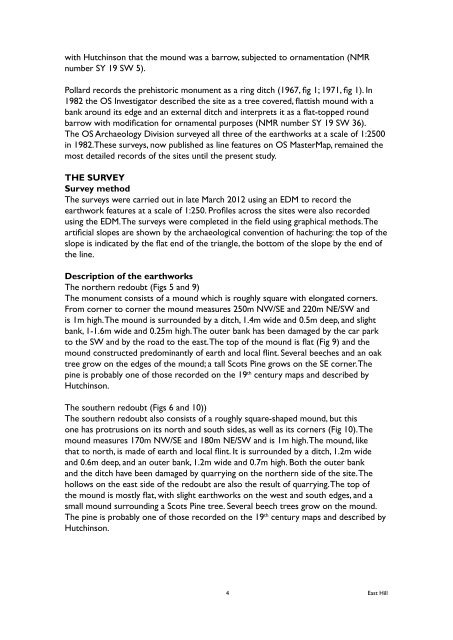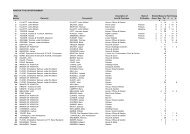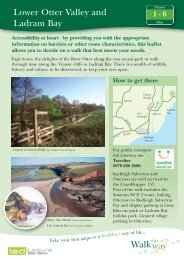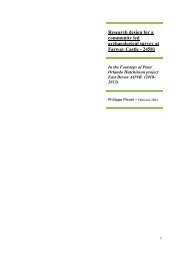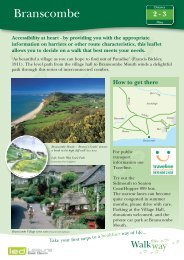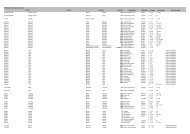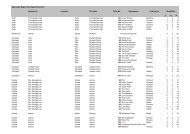NAPOLEONIC MILITARY SITES AND A PREHISTORIC ...
NAPOLEONIC MILITARY SITES AND A PREHISTORIC ...
NAPOLEONIC MILITARY SITES AND A PREHISTORIC ...
You also want an ePaper? Increase the reach of your titles
YUMPU automatically turns print PDFs into web optimized ePapers that Google loves.
with Hutchinson that the mound was a barrow, subjected to ornamentation (NMRnumber SY 19 SW 5).Pollard records the prehistoric monument as a ring ditch (1967, fig 1; 1971, fig 1). In1982 the OS Investigator described the site as a tree covered, flattish mound with abank around its edge and an external ditch and interprets it as a flat-topped roundbarrow with modification for ornamental purposes (NMR number SY 19 SW 36).The OS Archaeology Division surveyed all three of the earthworks at a scale of 1:2500in 1982.These surveys, now published as line features on OS MasterMap, remained themost detailed records of the sites until the present study.THE SURVEYSurvey methodThe surveys were carried out in late March 2012 using an EDM to record theearthwork features at a scale of 1:250. Profiles across the sites were also recordedusing the EDM. The surveys were completed in the field using graphical methods. Theartificial slopes are shown by the archaeological convention of hachuring: the top of theslope is indicated by the flat end of the triangle, the bottom of the slope by the end ofthe line.Description of the earthworksThe northern redoubt (Figs 5 and 9)The monument consists of a mound which is roughly square with elongated corners.From corner to corner the mound measures 250m NW/SE and 220m NE/SW andis 1m high. The mound is surrounded by a ditch, 1.4m wide and 0.5m deep, and slightbank, 1-1.6m wide and 0.25m high. The outer bank has been damaged by the car parkto the SW and by the road to the east. The top of the mound is flat (Fig 9) and themound constructed predominantly of earth and local flint. Several beeches and an oaktree grow on the edges of the mound; a tall Scots Pine grows on the SE corner. Thepine is probably one of those recorded on the 19 th century maps and described byHutchinson.The southern redoubt (Figs 6 and 10))The southern redoubt also consists of a roughly square-shaped mound, but thisone has protrusions on its north and south sides, as well as its corners (Fig 10). Themound measures 170m NW/SE and 180m NE/SW and is 1m high. The mound, likethat to north, is made of earth and local flint. It is surrounded by a ditch, 1.2m wideand 0.6m deep, and an outer bank, 1.2m wide and 0.7m high. Both the outer bankand the ditch have been damaged by quarrying on the northern side of the site. Thehollows on the east side of the redoubt are also the result of quarrying. The top ofthe mound is mostly flat, with slight earthworks on the west and south edges, and asmall mound surrounding a Scots Pine tree. Several beech trees grow on the mound.The pine is probably one of those recorded on the 19 th century maps and described byHutchinson.4East Hill


